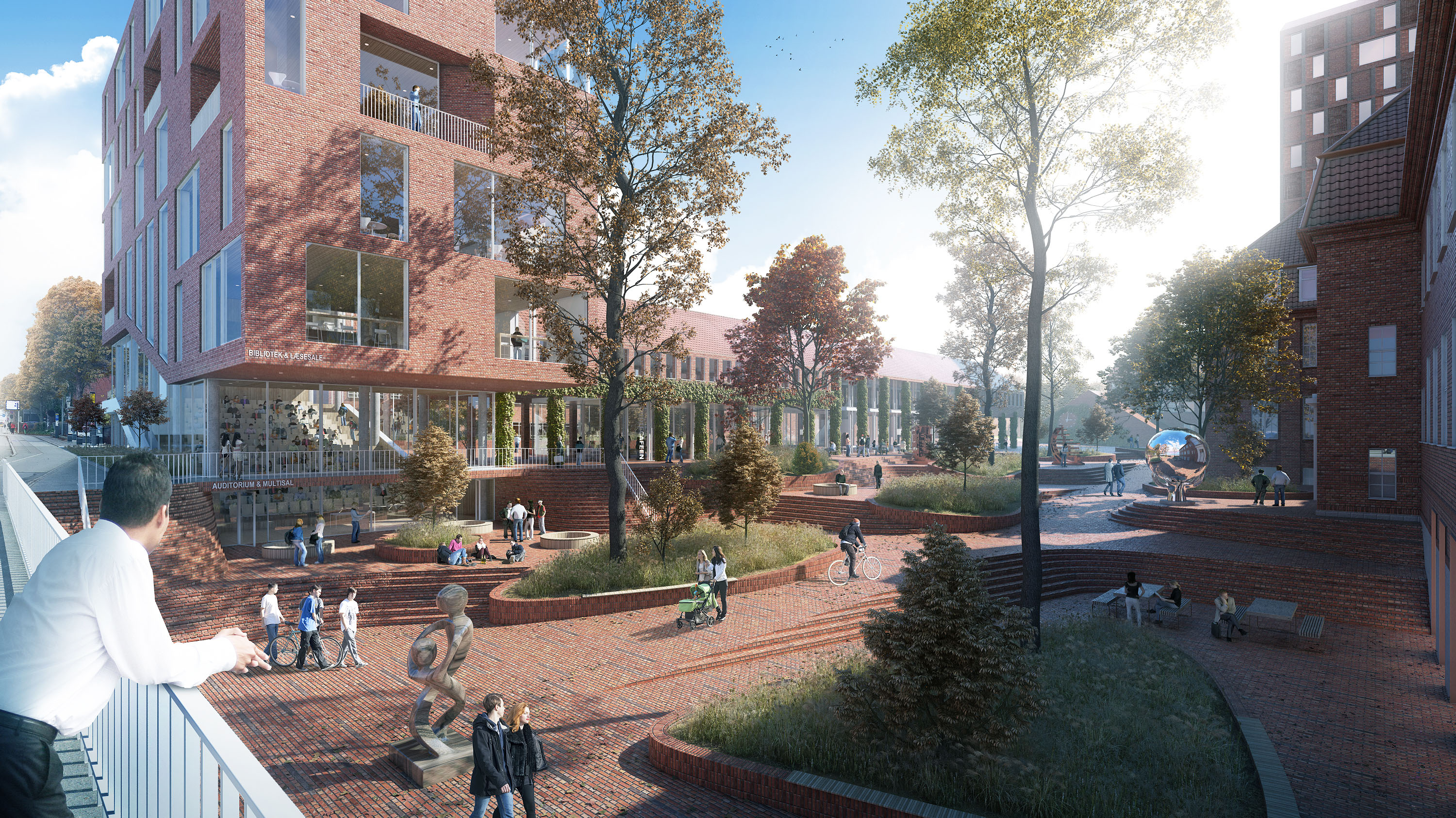Aarhus architects to develop AU's new campus
A consultancy team led by AART architects from Aarhus will advise Aarhus University’s research foundation’s real-estate company (Forskningsfondens Ejendomsselskab (FEAS) and Aarhus University about the development of AU's new campus. The vision is to create a red counterpart to the yellow brick buildings of the University Park.



A panel of judges including FEAS’ Managing Director Jørgen Lang and University Director Arnold Boon has chosen AART architects as consultants for the development of Aarhus University's coming campus area where Aarhus University Hospital (AUH) is located today. The consultancy team also includes Møller & Grønborg A/S, Trafficplan and E+N Architects A/S. The members of the consultancy team have been chosen via what is known as a parallel task, where three teams of architects each presented their proposal for how the old municipal hospital buildings could be transformed into a new university campus.
READ MORE: "Build the campus you need, but start by finding an overall concept."
Daring and bold proposal
Jørgen Lang, who is managing director of FEAS, stresses that all three proposals were good and could have been realised.
The new AU campus
FEAS purchased the area from the Central Denmark Region for DKK 800 million in January 2016 and will take over the area on 1 May 2019. AU will lease the buildings and can start moving in in 2019. A prerequisite for the development of the new campus is that a local development plan that includes the right to build is adopted before the end of 2017.
Read more about the development of the new campus (in Danish)
Team AART architects bases its proposal on four dogmas:
- Reinforce the historical potential
- Connect with the surrounding urban environment
- Provide opportunities for modern ways of life
- Create a robust design
See the judges' report (in Danish), in which the three proposals are presented, including the winning proposal from Team AART architects
"But for me, the strength of the winning proposal is unambiguous, and I can name three elements out of several. Firstly, simplicity and the simple but daring initiative to maintain the area's overall structure. Secondly, that it will create coherence between the existing and the new campus by drawing the University Park into the new area. This gives a feeling of driving through the campus when you drive along Nørrebrogade, and that’s a strong point. Thirdly, that they’ve been bold by keeping the red bricks and using them both on facades, roofs and paving," he says.
The vision presented by Team AART architects in its proposal can be seen as a red counterpart to the yellow brick buildings in the University Park.
Simple but well-conceived
University Director Arnold Boon also notes the winning proposal’s simple but well-conceived concept and the plans to create coherence with the existing campus:
"It’s a very well thought out proposal when it comes to the area and its history, and also when it comes to creating the best possible coherence between the University Park and the new university campus. It has good suggestions for green areas and urban spaces, where students and researchers can meet, and oases for in-depth study," he says.
Outlines a direction for the future campus
The winning proposal does not provide a definitive answer to how the new campus will look. But it outlines a direction for the concept that will be further developed in a collaboration between FEAS, AU and the Aarhus Municipality, explains Jørgen Lang.
"The consultancy task consists of working together with the university and FEAS and using the many inputs to a campus 2.0 as the basis for drawing up the development plan that will itself form the basis of the local development plan. The consultancy team has to outline a direction for open spaces, connections to the neighbouring parts of town, the basic design and placement of buildings, including identifying locations for student housing and researcher housing. But the fundamental initiative contained in the proposal will be mirrored in the final product," he says.
READ MORE: VOXPOP: Dream campus: Green areas, soft sofas and electric kettles
The proposal from AART architects includes a high-rise building, but whether it will be realised, and if so where, has not been determined at the present time, emphasises Jørgen Lang.
We should take our time
Arnold Boon tells Omnibus that AART architects will now further develop their proposal and that they will also incorporate some of the good elements from the other two architect teams, as well as from staff and student input. The local development plan will be adopted in late 2017, and it will take a long time before specific plans for which study programmes and departments will move into the new campus are finalised," he emphasises.
"We first get to take over the area in 2019, so we’ve got plenty of time to think things through. It’s important not to make plans too early. Right now it’s a question of establishing a process that can ensure that we’re able to realise the vision for the area. We need to be patient because we’ve got a unique opportunity to develop a new university campus so close to the city," says Boon.
The board of directors and the senior management team will meet for a seminar on the campus expansion on Monday 16 January.
“One of the things we will do is discuss a vision for the university of the future in 10-20-30 years. We must discuss what demands the modern learning environments and research environments make in relation to buildings and classrooms. We’re also getting external input, among other things from someone who is involved in the design and development of the new education and research environment at the Karolinska Institute in Sweden," says Boon.
The article was published 2017.01.19.
Translated by Peter Lambourne.

